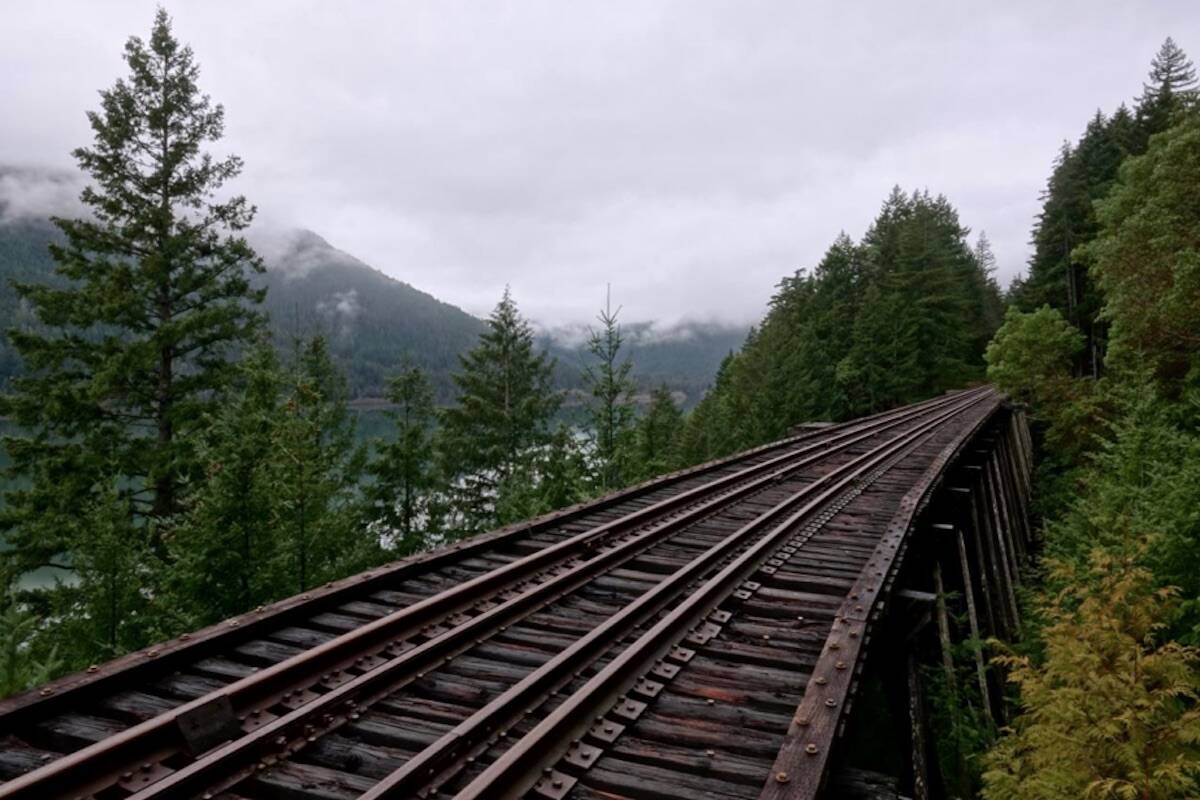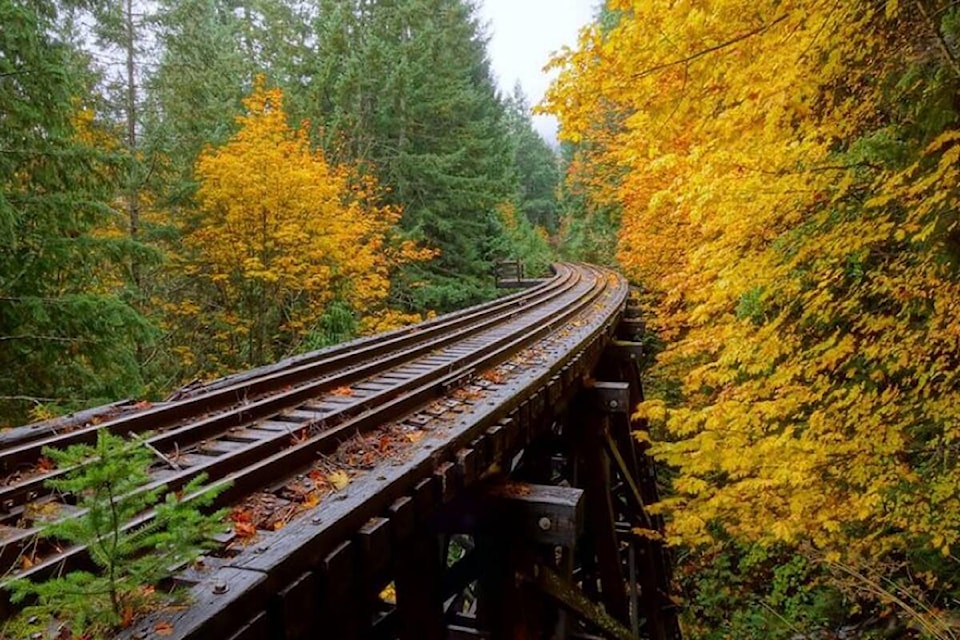The next month could see movement for residents interested in trading highways for passenger rail as a mid-March deadline looms for the federal government to state its plan for Vancouver Island’s tracks.
The CEO of the Island Corridor Foundation (ICF) says he believes both B.C. and the feds recognize the transportation, environmental and economic possibilities of the stalled, 290-kilometre Island Rail Corridor.
“It’s so strategically important to everything we’re going to do on this Island in the future,” Larry Stevenson said in an interview.
It was an eye-opener for governments when the destructive rain events in the fall of 2021 limited the movement of people and essentials over the Malahat, while the rail line escaped unscathed, Stevenson said.
“They suddenly realized that Victoria was cut off,” he said. “The Malahat was blocked and if we would’ve had a train, at least you have an option.”
The foundation estimates the cost of reviving rail, including a Langford-Victoria commuter service, is around $431 million. Stevenson said there’s strong support across the Island for making the line a comfortable and efficient travel alternative.
The South Island’s Transportation Strategy states growth will see the typical trip from Mill Bay to Victoria take an hour and a half by 2038 – ranging up to two-and-a-half hours in some conditions. A passenger train would also give those who don’t have or can’t afford a vehicle equal opportunity to get from point A to point B, Stevenson said.
“For somebody living in Courtenay who has to come into the cancer society in Victoria, it’s a big trip and they don’t want to be on the highways.”
The federal government has until March 14 to decide whether it will fund infrastructure on a contested corridor segment that runs through a Nanoose-area First Nation. That Court of Appeal-imposed deadline was the result of a lawsuit launched by Snaw-Naw-As First Nation, which has argued the land was expropriated for an intended use that is no longer being used.
The community brought the suit forward after the passenger service ended in 2011, causing the line to deteriorate in the decade since. Two rulings sided with Canada and the ICF, which committed to restoring the entire corridor if it could secure funding. But the court will let the First Nation revive their suit if the feds don’t provide funding or come to a decision by the deadline.
That decision remains under consideration, Transport Canada told Black Press Media.
“The Government of Canada is actively considering the issues raised in the ruling and is committed to better understanding perspectives across Vancouver Island, including those of First Nations, regional districts and other levels of government, to inform the path forward,” Transport Canada spokesperson Sua Sua Liu said.
The federal government’s decision-making will be informed by B.C.’s engagement on the corridor’s future, the statement said.

B.C. says it’s closely monitoring the federal response and it’s committed to finding the best use for the corridor, while also supporting First Nations’ interests.
“The Ministry of Transportation and Infrastructure is also currently engaging with First Nations and local governments to determine interests and concerns related to the corridor,” the ministry said in a statement.
Those consultations have involved the ICF, which has First Nations officials make up half its board, and it says recognition of the 14 communities whose territory the line traverses will be critical.
“We didn’t go in there and try to sell them a railroad,” Stevenson said, adding their goal was to listen and learn. “It needs to benefit our Nations.”
While the Capital Region has heavily endorsed the corridor’s comeback, a critique Stevenson often hears is it won’t cross Victoria’s Johnson Street bridge. He said the capital station would keep most of downtown within a 15-minute walk and would hopefully be a transit hub to bus people to their destination.
“Trains typically don’t do door-to-door service,” the CEO said. “A train is only a portion of an integrated transportation system, it’s not the only transportation system.”
“I don’t want to have the conversation with my grandchildren that we had the opportunity to do this and let it slip away.”
